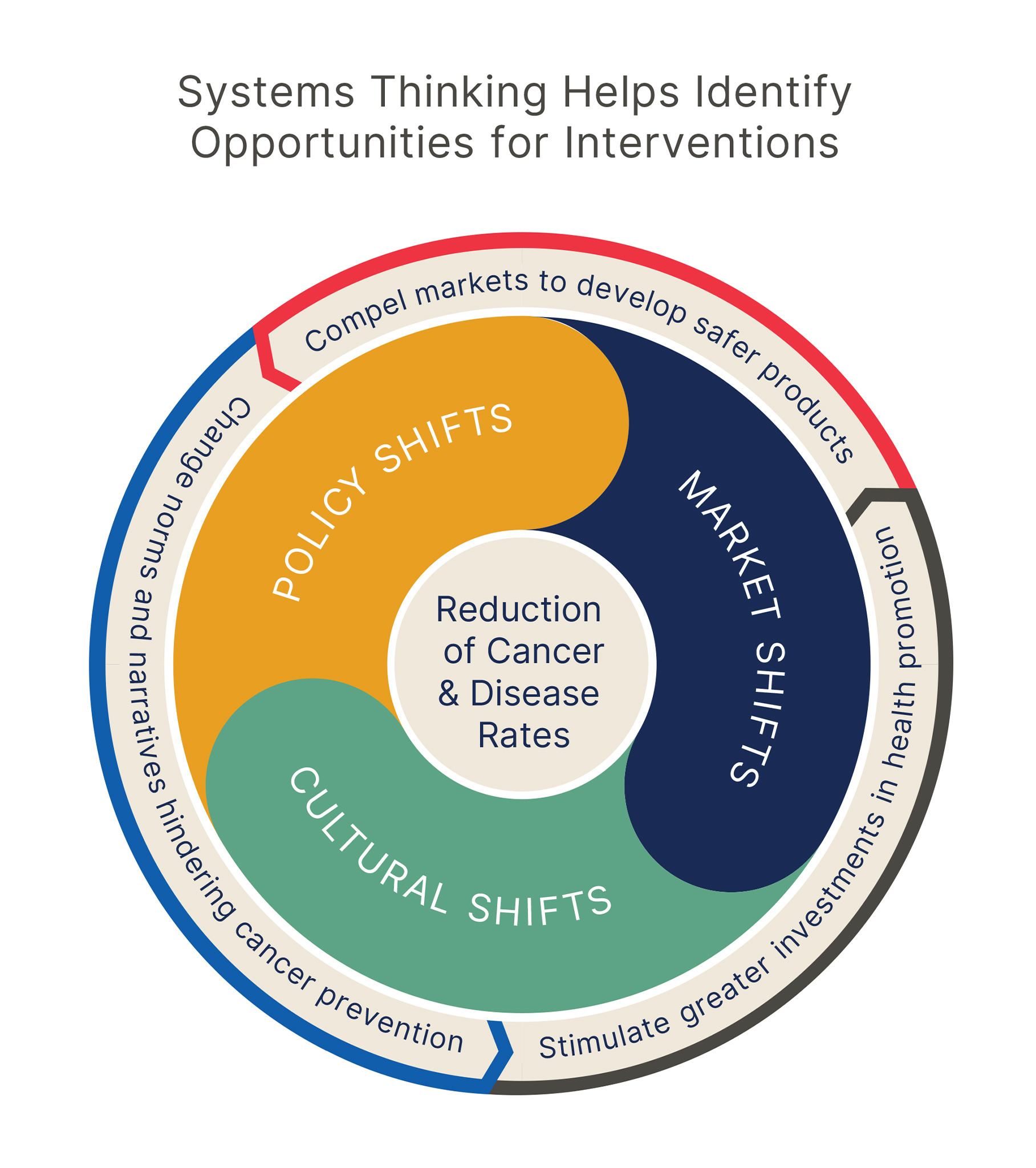Reducing Environmental and Occupational Cancer Risks Toolkit
Module 2: Maximize Data & Expert Insights
1. Leverage Systems Thinking
Systems thinking was used in Module 1 to help identify key stakeholders relevant to environmental and occupational cancer risk reduction needs and opportunities.
Systems thinking can also provide insights into the underlying factors and their interconnections that create the dynamics by which cancer risks associated with occupational and environmental exposures unfold. Employing a systems perspective means seeing the “forest from the trees”—when details start to fade, and patterns of the underlying relationships begin to emerge. Employing a systems perspective stops us from reacting to an apparent cause by invoking “quick fixes.” Instead, it provides us with the discipline to map the system to reveal solutions that balance short-term and long-term strategies that address the root causes of a problem rather than the symptoms.

As revealed in the figure above, systems thinking can help identify the primary drivers contributing to environmental and occupational cancer risks and the range of risk-reduction interventions that are needed, including cultural, market, and policy shifts.
The goal of using systems thinking is to become more strategic in promoting change that leads to sustainable and effective actions.
UNDERSTANDING KEY TRENDS AND FACTORS THAT REVEAL THE UNDERLYING SYSTEM OF THE ENVIRONMENTAL/OCCUPATION CANCER PROBLEM
When environmental and occupational cancer is new for your cancer coalition, it is helpful to bring partners together to begin mapping the system that needs to change. Two exercises are important first steps: (1) trend analysis and (2) understanding factors that are impeding cancer risk reduction and influencing cancer risks.
Trends of Air Pollution in Centerville
A group of diverse stakeholders came together in Centerville to discuss air pollution in the region. Experts (government officials, academic and community-based) identified the following trends in the region.
Example Topic: Air pollution in our state
Group Discussion Question: What are the factors and key stakeholders influencing the dynamics of carcinogenic air pollution in our state?